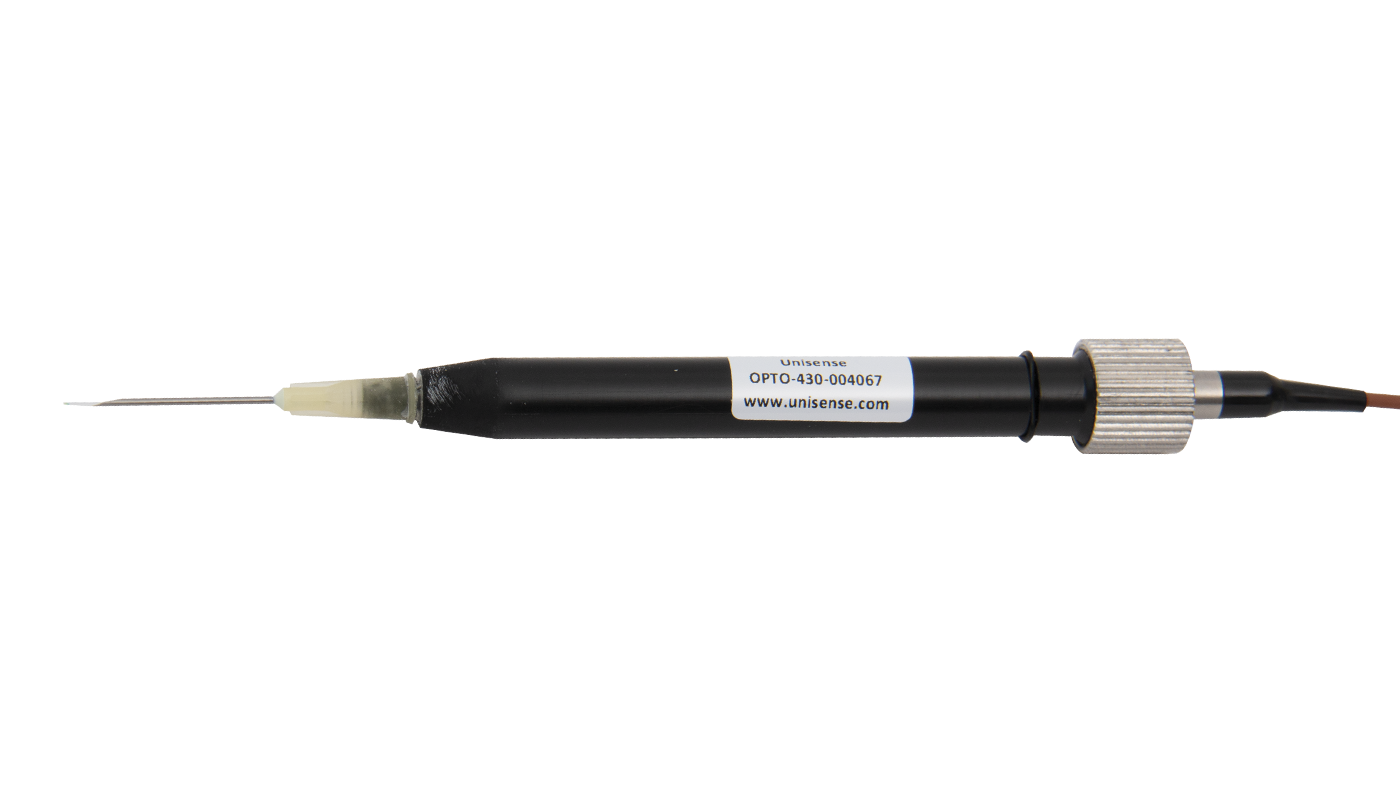
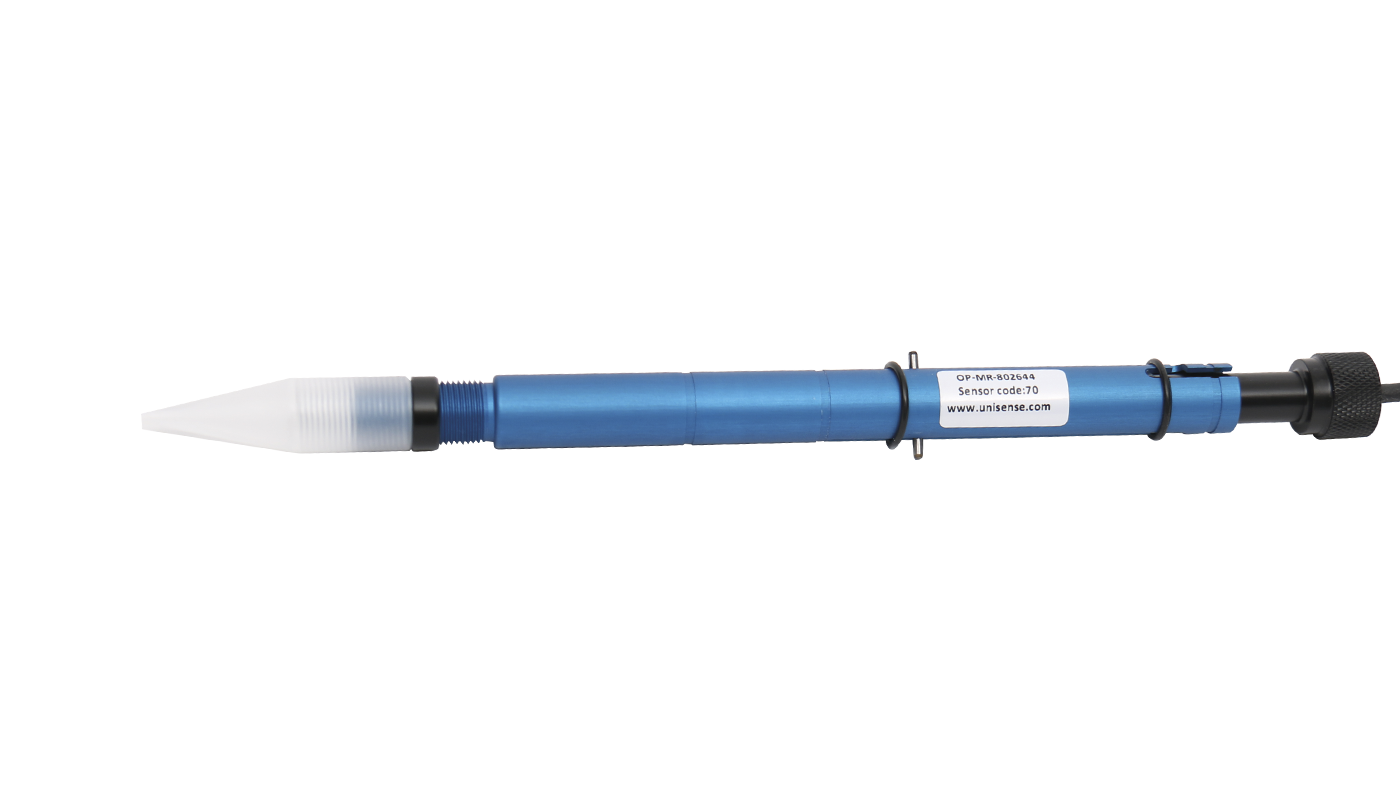
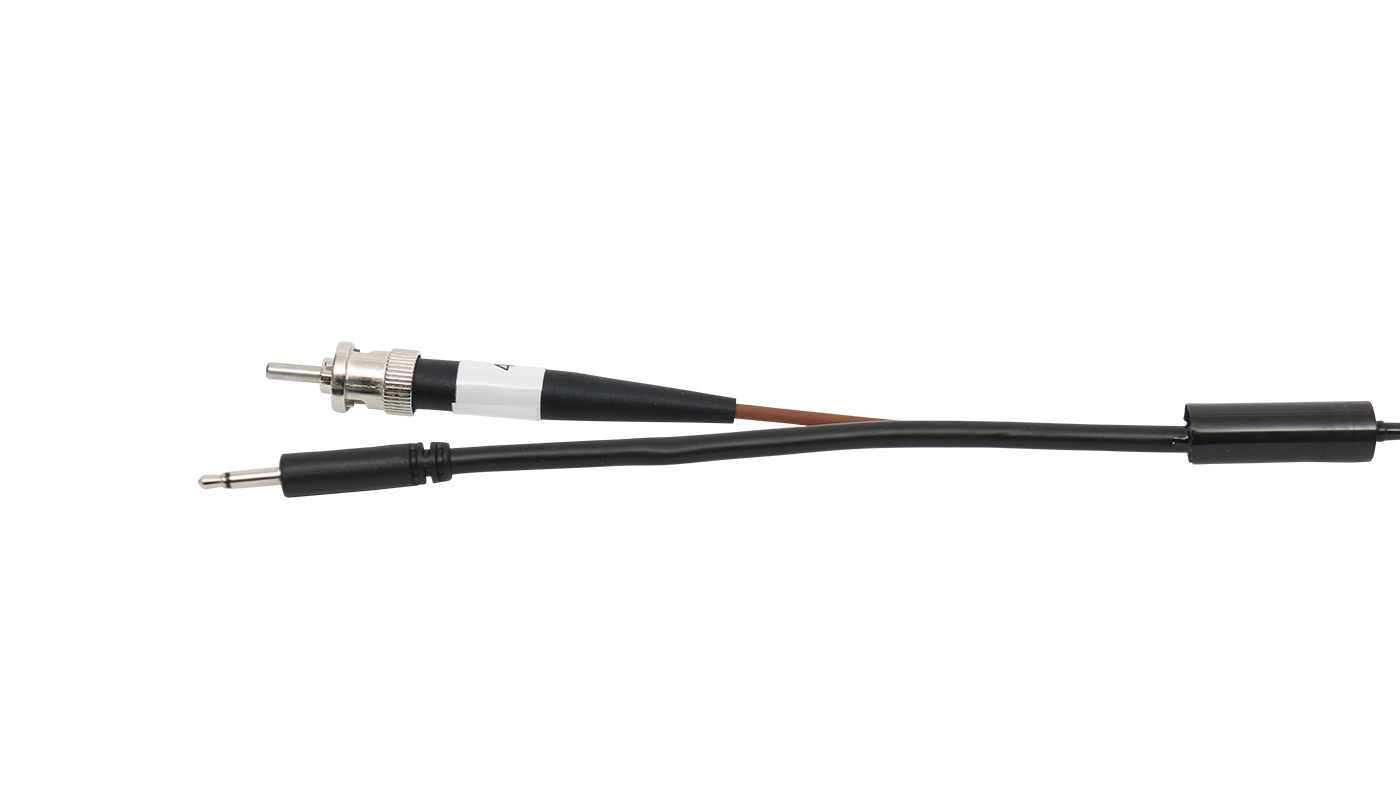
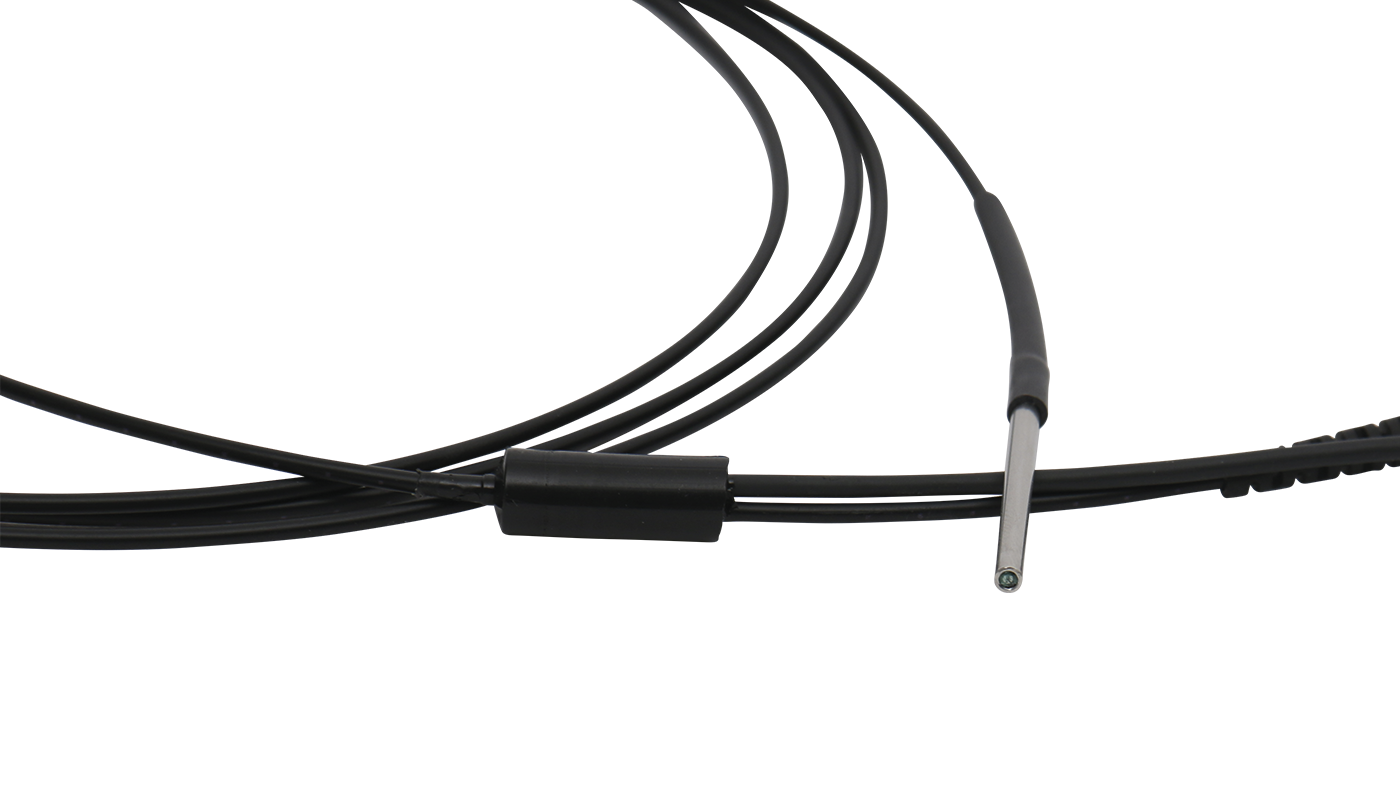
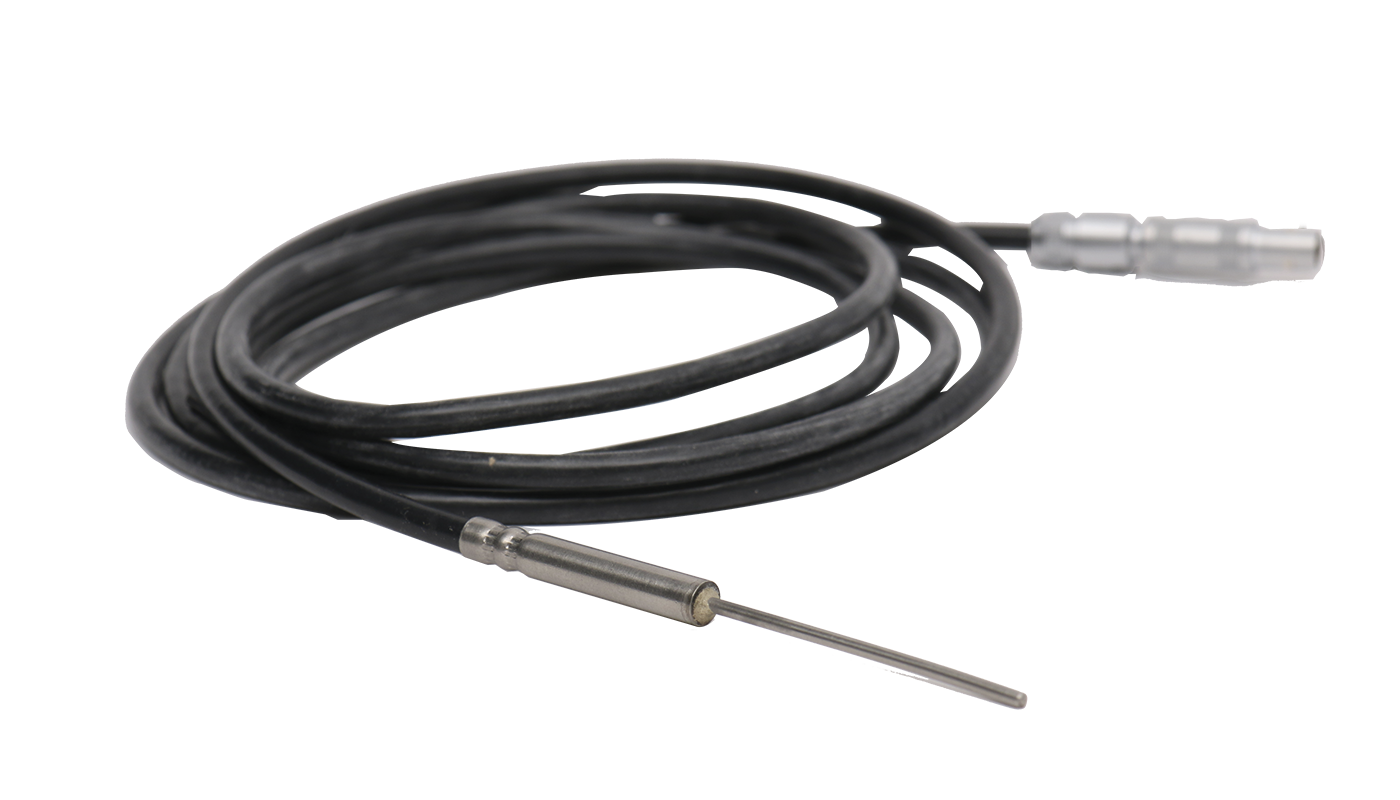
O2 MicroOptode
Unisense offers optode sensor technology with full integration to our existing laboratory systems. The optical sensor technology gives you a cost-effective and robust oxygen sensor that enables a great number of applications. Read more...
Oxygen MicroOptode principle
The measuring principle of the oxygen optode is based on Unisense technology and delivers unparalleled performance within our core application segments . Luminescence quenching caused by collision with oxygen molecules makes it possible to determine the oxygen concentration. More oxygen molecules will result in a lower emission signal, providing a measurement of the oxygen concentration in the sample.
The optode fiber is built into a steel needle. This allows you to retract the fiber into the needle for complete protection, e.g. when piercing a rubber septum. When the needle tip reaches the measuring site, the fiber can be pushed out into the sample and measure the oxygen concentration.
Customized versions with fixed exposure for e.g. profiling application and Eddy Covariance are also available.
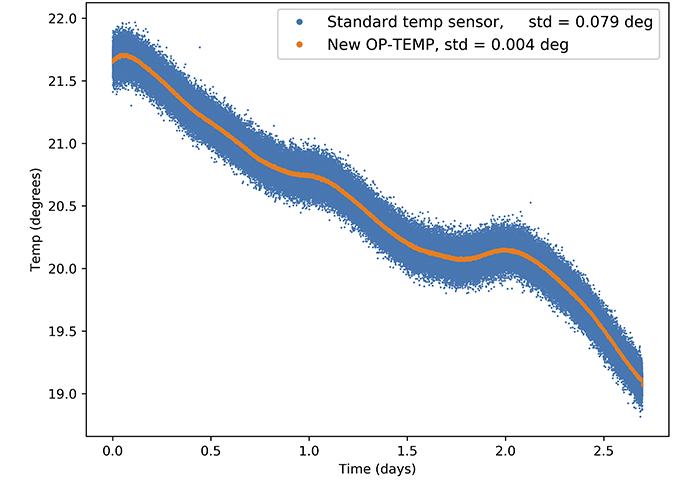
Combined with our Opto UniAmp, fx-3 and fx-6 UniAmp, the optical sensor technology gives you following advantages:
- Zero-noise temperature compensation
Accurate oxygen quantification by unmatched temperature compensation - Ambient light filtering technology
Improved performance under fluctuating ambient light conditions, e.g. in situ - Bleach protection
Novel multi-component modulation improves lifetime with 50% - 50 µm tip
Optimized design for true microprofiling - Fast 430 µm sensor
For Eddy Covariance and other applications requiring <0.3s response times - Robust 3000µm sensor
For bulk and long-time monitoring applications - E2PROM
Plug'N'Play with unique sensor identification and calibration retrieval
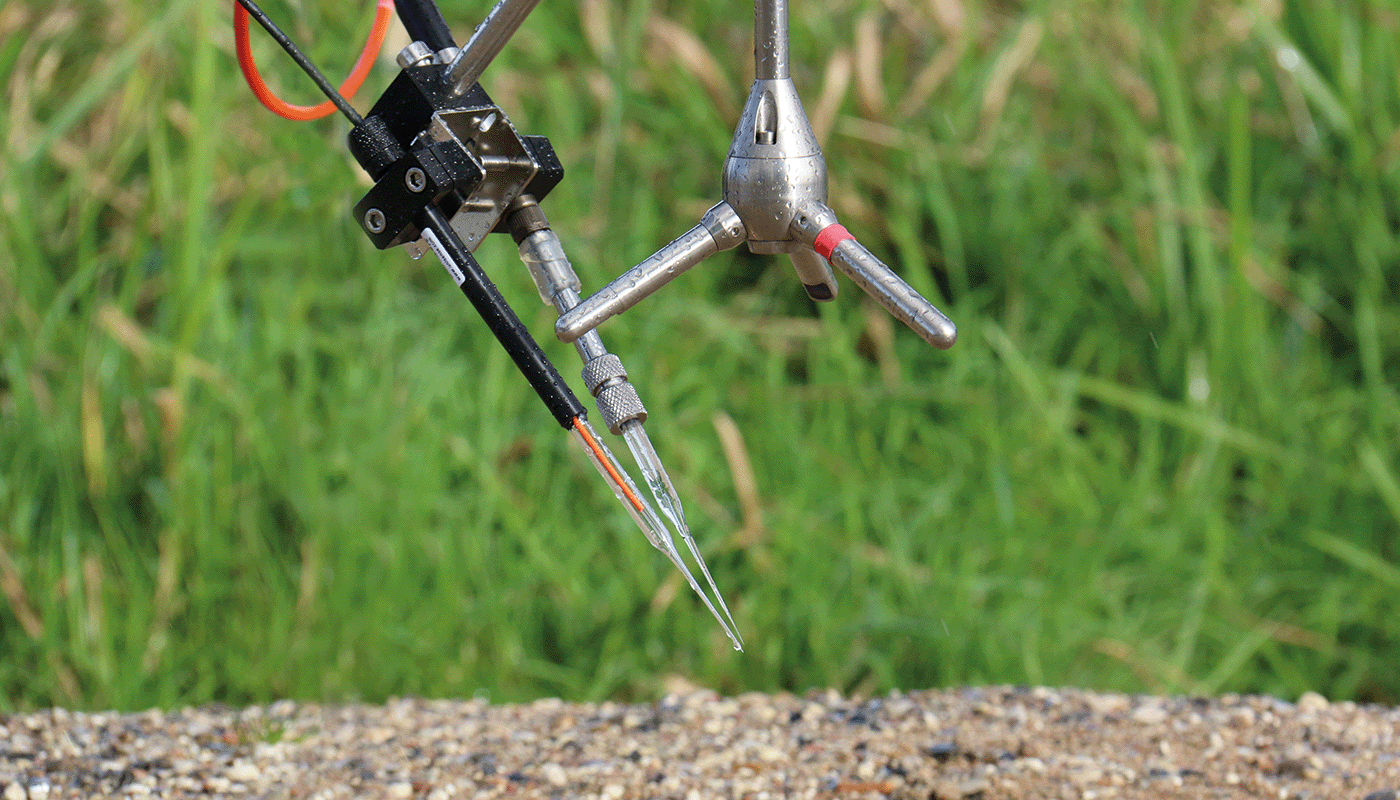
Full integration to lab systems
Simple two-point calibration and temperature compensation ensures ease-of-use, and the Unisense software suite allows you to combine the oxygen MicroOptode with our wide selection of microsensors. You can use the MicroOptodes with our 1 or 4 channel Opto UniAmp, the Field Opto UniAmp, the fx-3 or the fx-6 UniAmp Multi Channel.
The Unisense oxygen optodes are designed for research applications such as:
- Respiration
- Biomedicine
- Bulk and bioreactors
- Environmental sciences
- Profiling
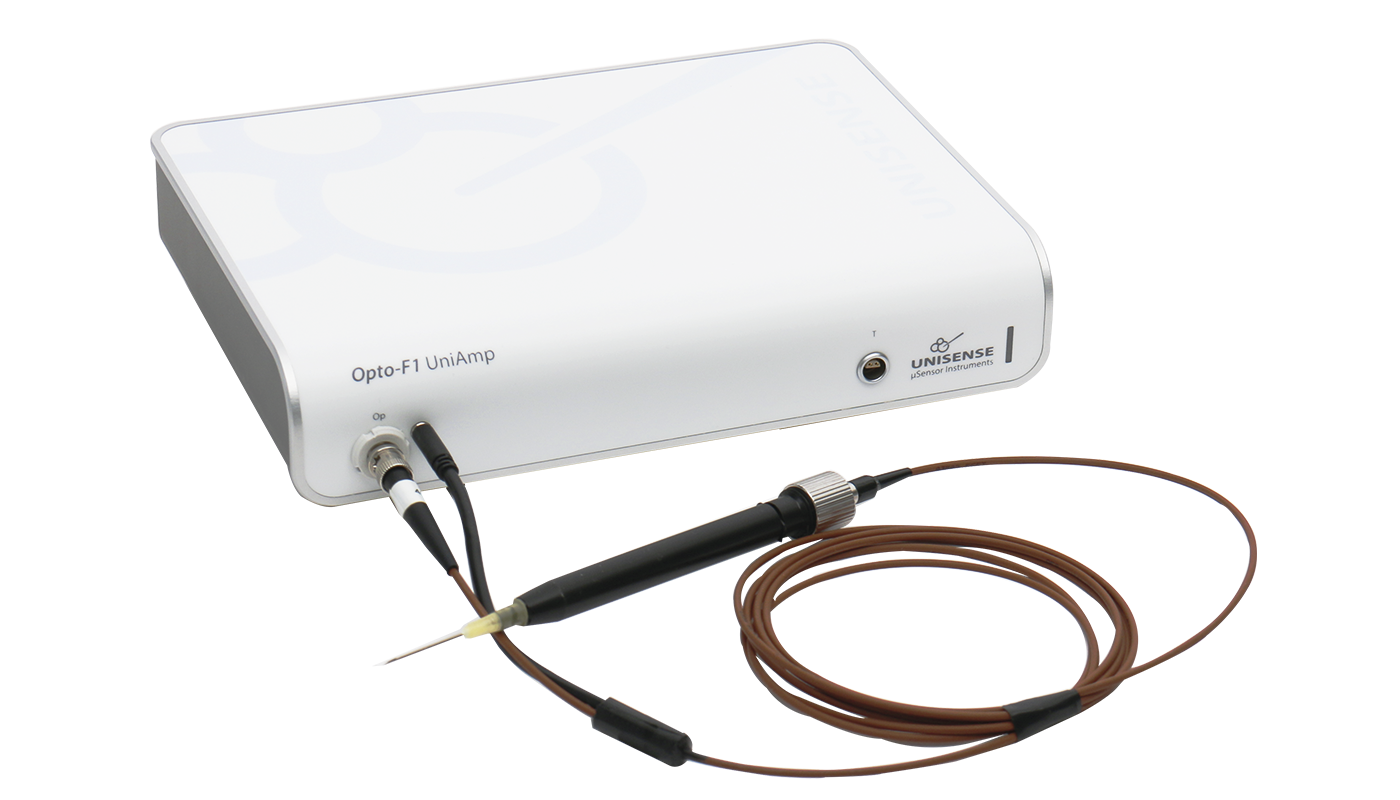
O2 MicroOptodes
Description and time stamps:
00:00 Introduction
00:55 Tip design and detection principle
09:34 Specifications
13:07 Troubleshooting

| Item | Standard | Options | Extra price for option selection |
|---|---|---|---|
|
Item
Cable length
|
Standard
2.0 m
|
Options
Customized available
|
Extra price for option selection
Yes, depends on length
|
|
Item
Connector
|
Standard
ST connector with E2PROM
|
| Attribute | Standard | Options | Extra price for option selection |
|---|---|---|---|
|
Attribute
Guaranteed lifetime Opto-430
|
Standard
1 year or 1.5 million datapoints, whichever comes first
|
||
|
Attribute
Guaranteed lifetime Opto-50 and Opto-430 Fast
|
Standard
1 year or 1.0 million datapoints, whichever comes first
|
||
|
Attribute
Guaranteed lifetime Opto-3000
|
Standard
1 year or 3.0 million datapoints, whichever comes first
|
||
|
Attribute
Expected lifetime
|
Standard
+3 years in darkness at room temperature
|
||
|
Attribute
Temperature range
|
Standard
0-50°C
|
||
|
Attribute
Temperature coefficient
|
Standard
Temperature compensation when using temperature sensor (ZNTC)
|
||
|
Attribute
Range
|
Standard
0-100% O2 (0-45 mg/L)
Optimal 0-50% O2 (0-23 mg/L) |
||
|
Attribute
Detection limit
|
Standard
0.02% (0.01 mg/L)
50 µm tip: 0.05% (0.025 mg/L) |
||
|
Attribute
Waterproof
|
Standard
Yes
|
||
|
Attribute
Pressure tolerant sensing tip
|
Standard
Yes
|
||
|
Attribute
Position of sensing tip
|
Standard
MR, bare fiber, fixed exposed, retractable needle
|
||
|
Attribute
Spatial resolution
|
Standard
Equals tip size, special slender 50 µm version
|
||
|
Attribute
Response
|
Standard
Linear when calibrated
|
||
|
Attribute
Interference
|
Standard
Some organic solvents and chlorine.
|
||
|
Attribute
No cross-sensitivity
|
Standard
pH 1-14, CH4, H2, CO2, H2S, CH3SH, NH3, any ionic species
|
| MicroOptode | Response time (90%) |
|---|---|
|
MicroOptode
Opto-50
|
Response time (90%)
<5 s
|
|
MicroOptode
Opto-430
|
Response time (90%)
<3 s
|
|
MicroOptode
Opto-430 Fast
|
Response time (90%)
<0.3 s
|
|
MicroOptode
Opto-3000
|
Response time (90%)
<15 s
|
| Opto MicroOptode | Fiber diameter and description |
|---|---|
|
Opto MicroOptode
Opto-50
|
Fiber diameter and description
50 µm for profiling, needle type: 0.6 x 25 mm
|
|
Opto MicroOptode
Opto-430
|
Fiber diameter and description
430 µm, needle type: 1.1 x 25 mm
|
|
Opto MicroOptode
Opto-430 Fast*
|
Fiber diameter and description
430 µm Fast (see note below), needle type: 1.1 x 25 mm
|
|
Opto MicroOptode
Opto-MR
|
Fiber diameter and description
430 µm (for MicroRespiration)
|
|
Opto MicroOptode
Opto-SL-1/4
|
Fiber diameter and description
FT-cell 1/4'' Swagelok Tee
|
|
Opto MicroOptode
Opto-PEEK-1/8
|
Fiber diameter and description
FT-cell 1/8'' PEEK Tee
|
|
Opto MicroOptode
Opto-PEEK-1/16
|
Fiber diameter and description
FT-cell 1/16'' PEEK Tee
|
|
Opto MicroOptode
Opto-FT-GLASS-6
|
Fiber diameter and description
Glass FT-cell 6 mm outer diameter
|
|
Opto MicroOptode
Opto-FT-GLASS-8
|
Fiber diameter and description
Glass FT-cell 8 mm outer diameter
|
|
Opto MicroOptode
Opto-3000
|
Fiber diameter and description
3,000 µm fiber with steel 5 cm cap
|
|
Opto MicroOptode
Opto-3000-ST-1/4
|
Fiber diameter and description
1/4'' steel tube
|
|
Opto MicroOptode
Temp-UniAmp
|
Fiber diameter and description
Temperature sensor
|
|
Opto MicroOptode
Opto-Field
|
Fiber diameter and description
430 µm for Field Opto UniAmp
|
|
Opto MicroOptode
Opto-Field 430 Fast
|
Fiber diameter and description
430 µm Fast for Eddy Covariance
|
|
Opto MicroOptode
Opto-Field 3000
|
Fiber diameter and description
3,000 µm fiber with steel 5 cm cap for Field Opto UniAmp
|
|
Opto MicroOptode
Opto-Temp Field
|
Fiber diameter and description
Temperature sensor for Field Opto UniAmp
|
*Maximum sampling speed is 1 Hz on lab instruments and 10 Hz on Field Opto UniAmp. In EC-mode up to 16 Hz on Field Opto UniAmp.
Video Guides
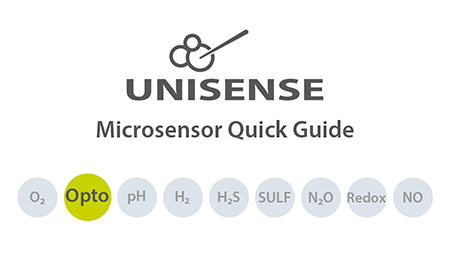
A short presentation of how we make microoptodes, how you can use them, and a look at specifications and customizations.
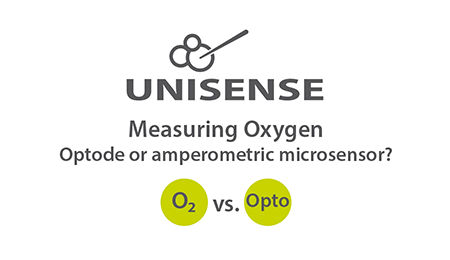
CSO Lars Hauer Larsen reviews the pros and cons of these sensor types for a given application.
Quick Enquiry
Related publications
Related products
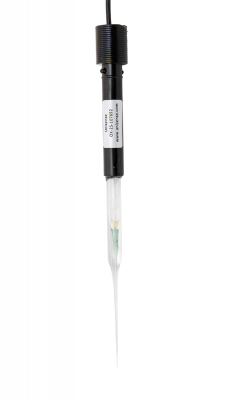
High performance oxygen microsensor
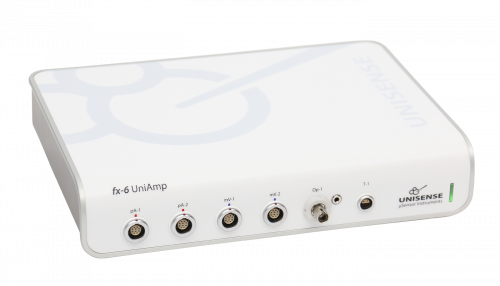
UniAmp Multi Channel for all Unisense sensors and electrodes including optical sensors
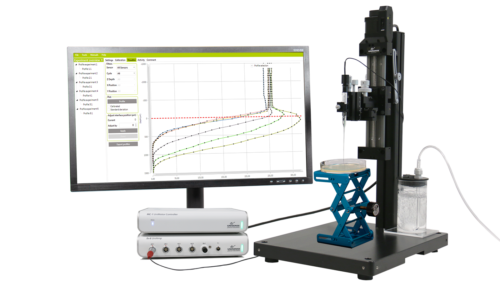
Microprofiles with extreme accuracy, high spatial and temporal resolution
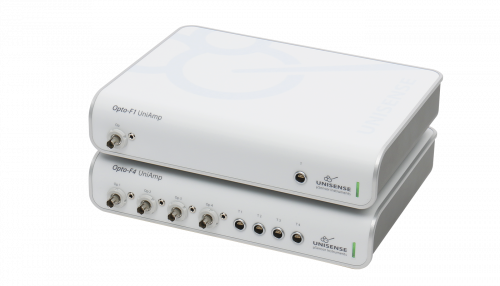
Optode meter for accurate quantification
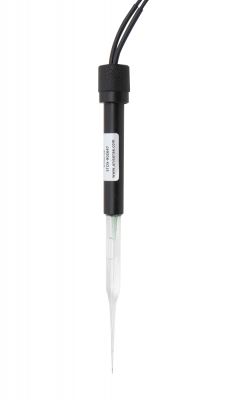
Measure ultra low oxygen concentrations (<10nM)
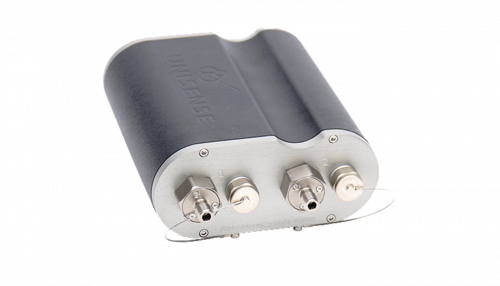
Waterproof MicroOptode amplifier
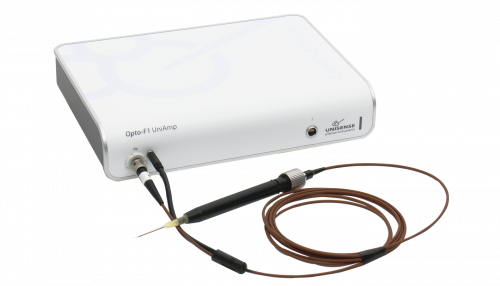
An optical fiber solution for oxygen sensing
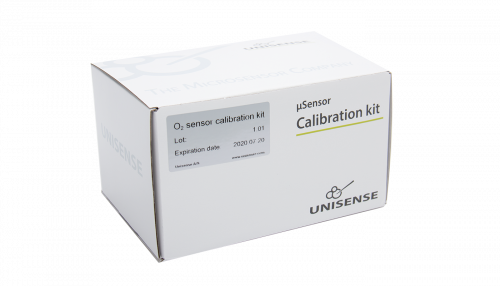
10 ready-to-use vials for calibration of our oxygen sensors and optodes
